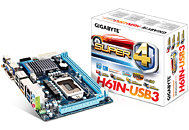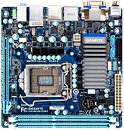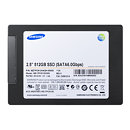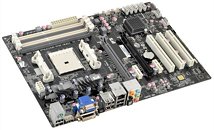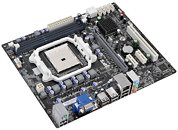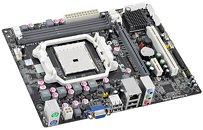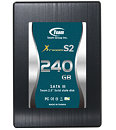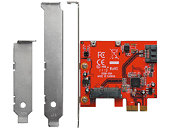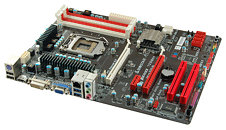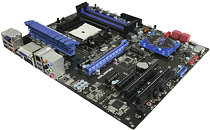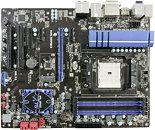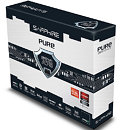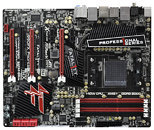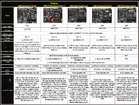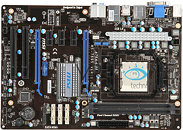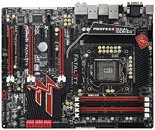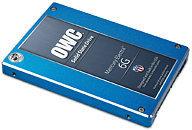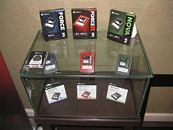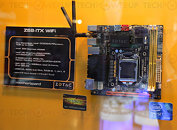
Gigabyte Slips in New Mini-ITX H61N-USB3 Motherboard
Gigabyte launched a new socket LGA1155 motherboard in the mini-ITX form-factor, the GA-H61N-USB3. It is targeted at HTPCs and compact desktops, and is based on the Intel H61 Express (B3) chipset. In its tiny board area of 289 cm², Gigabyte manages to cram in the essentials that the board's consumers will need. The LGA1155 socket is powered by a 6-phase VRM design. The board draws power from a standard 24-pin ATX and 4-pin CPU power connectors. The CPU is wired to two DDR3 DIMM slots for dual-channel DDR3-1333 MHz memory. The lone expansion slot is a PCI-Express 2.0 x16.
In the area of connectivity, we're a little baffled by Gigabyte's choices. There are two SATA 3 Gb/s ports, but that's next to a TPM header, which could have easily made room for two more SATA ports. The board uses high-quality Realtek ALC889 HD audio CODEC, but instead of wiring it to an 8-channel audio jack cluster, it's wired to a 6-channel one, and space is wasted on an optical/coaxial SPDIF out cluster. Instead, Gigabyte could have used the hybrid cluster that has 8-channel analog outputs as well as a TOSLINK output, like this one. Nevertheless, there's plenty of display connectivity, including DVI, D-Sub, and HDMI 1.4a. There are four USB 2.0 ports, and two USB 3.0 ports driven by Fresco FL1009 controller. There is one power-eSATA port wired to the PCH. A gigabit Ethernet connection makes for the only networking option. The Gigabyte GA-H61N-USB3 is priced at around $105.
In the area of connectivity, we're a little baffled by Gigabyte's choices. There are two SATA 3 Gb/s ports, but that's next to a TPM header, which could have easily made room for two more SATA ports. The board uses high-quality Realtek ALC889 HD audio CODEC, but instead of wiring it to an 8-channel audio jack cluster, it's wired to a 6-channel one, and space is wasted on an optical/coaxial SPDIF out cluster. Instead, Gigabyte could have used the hybrid cluster that has 8-channel analog outputs as well as a TOSLINK output, like this one. Nevertheless, there's plenty of display connectivity, including DVI, D-Sub, and HDMI 1.4a. There are four USB 2.0 ports, and two USB 3.0 ports driven by Fresco FL1009 controller. There is one power-eSATA port wired to the PCH. A gigabit Ethernet connection makes for the only networking option. The Gigabyte GA-H61N-USB3 is priced at around $105.
